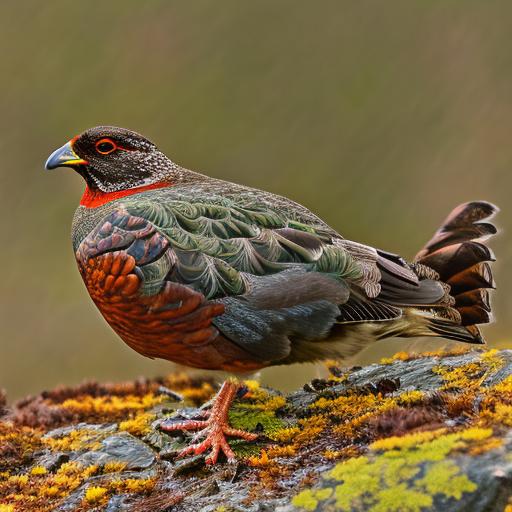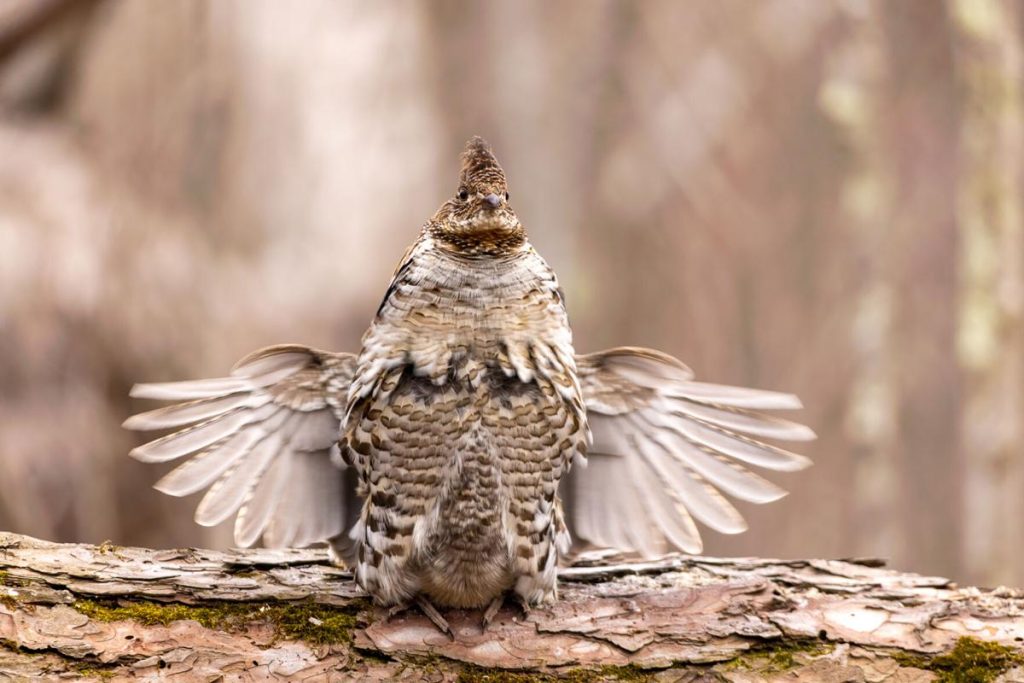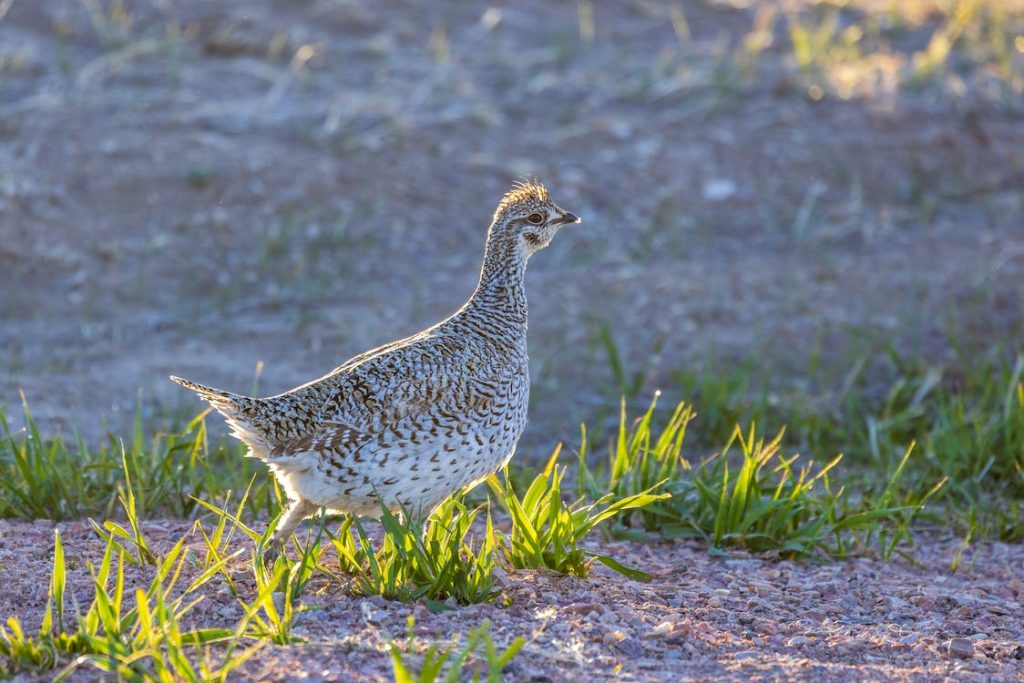Your cart is currently empty!

Expert Guide: How to Hunt Grouse Without a Dog

Table of Contents
Introduction
Grouse hunting is an age-old tradition, cherished by many who roam the woods in search of this elusive game bird. Often, hunters rely on their loyal canine companions to make the hunt more fruitful. However, there comes a time when one might ponder the question: “how to hunt grouse without a dog?” It might be out of necessity, a personal challenge, or simply the thrill of trying something different. Whatever the reason, hunting grouse without the keen nose of a dog is an entirely different ball game. As an experienced hunter who has spent countless hours in the field, both with and without a four-legged friend, I can attest to the unique challenges and rewards that come with going solo. While it may seem daunting at first, understanding the nuances of grouse behavior, their habitats, and sharpening your own senses can offer an unparalleled hunting experience. This guide aims to shed light on exactly how to hunt grouse without a dog, blending traditional wisdom with tried and tested techniques.
Understanding Grouse Behavior and Habitat
Recognizing Typical Grouse Habitats
To embark on the journey of hunting grouse without the assistance of a dog, one of the very first steps is to understand and recognize the habitats where these elusive birds thrive. Grouse aren’t just randomly scattered throughout the woods; they gravitate towards specific environments that cater to their needs for food, shelter, and breeding.
Meadows, especially those adjacent to dense forests, are often favored by grouse due to the rich assortment of seeds and insects available. These open spaces provide the birds with ample opportunities to feed, especially in early mornings or just before sunset. If you come across a meadow during your hunting expedition, keep a keen eye out for grouse taking advantage of the abundant food sources.
Woods, particularly those with a combination of young and mature trees, offer grouse both shelter and sustenance. Areas with fallen logs, berry shrubs, or a thick underbrush can be especially attractive to grouse. They provide a safe haven from predators and are rich in the buds and leaves that make up a significant part of the grouse’s diet.

Edges or transitional zones, where open fields meet dense forests, are another hotspot. These zones provide the best of both worlds for grouse – ample feeding opportunities in the open, with the safety of dense woods just a hop away. If you’re wondering how to hunt grouse without a dog effectively, familiarizing yourself with these habitats will set a strong foundation.
Key Grouse Behaviors to Be Aware Of
Just knowing where to find grouse isn’t enough; understanding their behaviors will give you the upper hand. These birds have predictable patterns, and a seasoned hunter can often anticipate a grouse’s next move if they’re well-versed in these behaviors.
When They’re Most Active: Grouse are crepuscular, which means they’re most active during the early morning and late afternoon. These are the times when they venture out of their hiding spots to feed and, occasionally, to bask in the sun. Plan your hunting sessions around these hours to increase your chances of spotting them.
Typical Signs and Sounds: A grouse’s drumming is one of the most unmistakable sounds in the woods. Males often perform this ritual, which involves beating their wings rapidly against the air, to attract females and establish their territory. This drumming can be a dead giveaway of a grouse’s presence, even if the bird itself remains unseen.
Apart from the drumming, keep an eye out for other signs like freshly turned leaves, droppings, or feathers. These are subtle indications that a grouse might be nearby. Without a dog to rely on, sharpening your senses and being attuned to these signs becomes crucial.
In essence, the art of how to hunt grouse without a dog rests on two pillars – understanding the environment and anticipating the bird’s behavior. While it might require a bit more patience and observation, the rewards, both in terms of the hunt and the intimate connection with nature, are unparalleled.
Essential Gear for Solo Grouse Hunting
Essential Gear for Solo Grouse Hunting
Embarking on a grouse hunting expedition without a dog is a unique experience, and while it presents its own set of challenges, having the right gear can significantly tilt the odds in your favor. Equipping oneself appropriately for the terrain and the game is vital. Let’s dive into the specifics.
Recommended Firearms and Ammunition for Grouse Hunting
When it comes to grouse, your choice of firearm and ammunition can make a world of difference. Most seasoned grouse hunters would recommend a lightweight shotgun, ideally 20-gauge or 28-gauge. These are easy to carry through thick woods and provide a good spread, increasing the chances of hitting the fast-moving bird.
For ammunition, consider using #7.5 or #8 shot. These are small enough to ensure a humane kill without causing excessive damage to the meat.
Shotguns vs. Rifles: Pros and Cons
Shotguns: The go-to for most grouse hunters. Pros:
- Provides a spread of pellets, increasing the likelihood of hitting a fast-flying grouse.
- Ideal for the unpredictable flushes that grouse are known for.
Cons:
- Limited range.
- The spread might damage the bird excessively if shot from too close a range.
Rifles: Less common but used by some hunters, especially in terrains with clearer lines of sight. Pros:
- Precise, allowing for clean kills.
- Longer range compared to shotguns.
Cons:
- Requires a high degree of accuracy, especially with a fast-moving target like grouse.
- Not suitable for thick woods or areas with limited visibility.
Apparel and Safety Gear: Blending In While Staying Safe
How to hunt grouse without a dog effectively also extends to what you wear. Grouse have keen eyesight, so blending into your surroundings is essential. Opt for camouflaged clothing that matches the terrain you’re hunting in, whether it’s woodland, meadow, or marsh patterns.
Safety should always be paramount. Bright orange hats or vests are vital to ensure you’re visible to other hunters. This contrast might seem counterproductive to staying hidden, but grouse see colors differently and are less likely to be spooked by bright colors than by movement.
Invest in a good pair of waterproof, lightweight boots. Grouse terrains can be wet, and there’s nothing worse than trudging around with soggy feet.
Other Equipment: Calls, Decoys, and Camouflage
- Calls: While grouse aren’t as responsive to calls as some other game birds, a good call can still be useful, especially during the mating season. Familiarize yourself with the typical grouse sounds to mimic them effectively.
- Decoys: These can be used to draw grouse into open areas, especially if you’re in a known grouse territory. However, remember that grouse are wary birds, so ensure your decoy setup is realistic.
- Camouflage: Beyond clothing, consider camouflage nets or blinds, especially if you plan on setting up in one spot for an extended period. These can conceal your silhouette and any movement you might make.
In summary, while the skill and intuition of the hunter remain paramount, the right gear can play a pivotal role in ensuring success, especially when figuring out how to hunt grouse without a dog. Make informed choices, prioritize safety, and the woods will reward you with an unforgettable hunting experience.
Successful Techniques and Strategies
The thrill of hunting grouse without a dog lies not just in the catch but in mastering the craft itself. Over the years, hunters have refined various techniques to level the playing field, especially when going solo. Here, we’ll explore some of these tried and tested methods that can increase your chances of a successful hunt.
Stalking Techniques: Moving Silently and Using Natural Cover
Stalking is an art, honed by understanding the terrain and being one with nature. For grouse hunting, it’s about the perfect blend of patience, silence, and stealth.
- Footwork: Each step should be deliberate. Soft-soled boots can help minimize noise. Tread lightly, avoiding twigs or dry leaves.
- Natural Cover: Use trees, bushes, and other natural formations to conceal your presence. Remember, it’s not just about being unseen but also about keeping your scent shielded.
- Pace: Move slowly, pausing frequently to listen and observe. Grouse can detect rapid movements from a distance, but they’re less likely to spot a slow-moving object.
- Direction: Approach from downwind whenever possible. This ensures that the grouse doesn’t pick up your scent.
Identifying and Interpreting Signs of Grouse Presence
A skilled hunter learns to read nature’s signs, clues that hint at the presence of their quarry.
Tracks, Droppings, and Feeding Areas:
- Tracks: Grouse tracks are distinct, with three forward-pointing toes. Fresh tracks in soft ground or snow can lead you to their current location.
- Droppings: Fresh droppings indicate recent activity. They are cylindrical and often contain undigested plant material.
- Feeding Areas: Look for signs of recent feeding, such as turned-over leaves, pecked berries, or areas where the ground has been scratched. These areas can also hint at their preferred feeding times.

Setting Up Ambush Points Based on Wind Direction and Terrain
Strategically choosing where to wait for your prey can significantly boost your success rate.
- Wind Direction: Always stay downwind of where you suspect the grouse to be. This prevents them from picking up your scent.
- Elevation: If possible, find a vantage point slightly elevated from the ground. This gives a better line of sight and can help spot grouse before they spot you.
- Edge Zones: As mentioned earlier, grouse love transitional areas where woods meet open fields. Setting up an ambush at such edges can be productive.
- Natural Barriers: Rivers, thickets, or rocky outcrops can funnel grouse movement. By positioning yourself near these barriers, you increase the likelihood of the grouse coming to you.
- Quiet & Patience: Once you’ve chosen your ambush point, settle down and minimize movement. It’s a waiting game, and patience is key. Use this time to heighten your senses; listen for the soft rustling of leaves, the faint calls, or the sudden flutter of wings.
Related Questions
Is it more challenging to hunt grouse without a dog?
Absolutely, hunting grouse without a dog presents its own set of challenges. Dogs, with their keen sense of smell and trained behaviors, can help pinpoint the location of grouse, alert the hunter, and retrieve the game once downed. Without a dog, the hunter must rely more on personal skill, observation, and knowledge of the terrain and grouse behavior. However, while it’s challenging, many find it deeply rewarding, as it demands a heightened sense of awareness and connection to the environment.
What time of day is best for grouse hunting?
Grouse are crepuscular creatures, meaning they’re most active during the early morning and late afternoon. These times see them venturing out of their hiding spots to feed and roam. Early mornings, just after dawn, and late afternoons before dusk are the prime times. Not only is grouse activity heightened, but the softer light during these hours also provides a more discreet backdrop for the hunter, making it a favorable time for a successful hunt.
How do I approach a flushed grouse?
Approaching a flushed grouse requires a combination of stealth, patience, and anticipation. Once a grouse flushes, it’s crucial to mark its landing spot visually. Move deliberately towards that location, using natural cover to shield your approach. Approach from downwind to avoid the bird catching your scent. Pause occasionally to listen and observe, as grouse often won’t travel far before setting down again. The key is to approach quietly and be ready for another potential flush as you get closer.
Are there any advantages to hunting grouse solo?
Certainly! While hunting grouse without a dog is undeniably challenging, it offers unique advantages. Solo hunting hones your observational skills, making you more attuned to the nuances of the environment. It fosters a deeper connection to nature, as you rely solely on your senses and instincts. Without a dog, there’s also less disturbance in the environment, often allowing for closer encounters with wildlife. Additionally, the satisfaction of a successful solo hunt, knowing you’ve relied solely on your skills and knowledge, is immensely gratifying.
Summary
Venturing into the woods, armed with the knowledge of how to hunt grouse without a dog, is a testament to a hunter’s skill, patience, and adaptability. Throughout this guide, we’ve explored the essential aspects of solo grouse hunting, from understanding their natural behavior and habitats to equipping oneself with the right gear and mastering efficient hunting techniques. While the absence of a canine might initially seem like a disadvantage, it can also be an opportunity to refine your hunting prowess, relying more on your senses and understanding of the game. The beauty of hunting is not just in the catch but also in the process – the communion with nature, the anticipation, and the thrill of the hunt. Embracing the challenge of figuring out how to hunt grouse without a dog not only broadens your skill set but also deepens your appreciation for this magnificent bird and the timeless tradition of hunting. Whether you’re a seasoned hunter or a novice, going solo in pursuit of grouse offers a unique experience, one that is bound to leave you with memories, stories, and skills that last a lifetime.

Herb has been a longtime lover of the outdoors. Whether it be hunting, camping, fishing or just getting outside to reset. Proud father and animal lover. Bourbon anyone?

by
Comments
5 responses to “Expert Guide: How to Hunt Grouse Without a Dog”
-
[…] If you’re interested in cow elk hunting, you might also enjoy reading our article on “How to Hunt Grouse Without a Dog.” Grouse hunting can be a thrilling and challenging experience, and this article provides valuable tips and techniques for hunters who prefer to hunt without the assistance of a dog. Whether you’re a beginner or an experienced hunter, this article will help you improve your grouse hunting skills. Check it out here. […]
-
[…] If you’re planning an elk hunting trip, you may also be interested in our article on “How to Hunt Grouse Without a Dog.” Grouse hunting can be a thrilling and challenging experience, and this article provides valuable tips and techniques for hunting these elusive birds without the assistance of a hunting dog. Whether you’re a seasoned hunter or new to the sport, this article will help you improve your chances of success in the field. Check it out here. […]
-
[…] If you’re an avid hunter looking to expand your skills, you might be interested in our article on “How to Hunt Grouse Without a Dog.” Grouse hunting can be a thrilling and challenging experience, and this article provides valuable tips and techniques for those who prefer to hunt without the assistance of a dog. Whether you’re a beginner or an experienced hunter, this article will help you improve your chances of success in the field. Check it out here. […]
-
[…] If you’re interested in British Columbia elk hunting, you might also want to check out this article on “How to Hunt Grouse Without a Dog” from Old Oak Syndicate. Grouse hunting can be a thrilling and challenging experience, and this article provides valuable tips and techniques for hunters who prefer to hunt without the assistance of a dog. Whether you’re a beginner or an experienced hunter, this article offers insights that can enhance your grouse hunting adventures. Read more […]
-
[…] If you’re interested in tule elk hunting, you might also want to check out this article on “How to Hunt Grouse Without a Dog” from Old Oak Syndicate. Grouse hunting can be a thrilling and challenging experience, and this article provides valuable tips and techniques for hunters who prefer to hunt without the assistance of a dog. Whether you’re a seasoned hunter or just starting out, this article is a great resource for improving your grouse hunting skills. Read more […]

Categories
- Big Game Hunting (301)
- Deer (202)
- Reviews (3)
- Shooting (16)
- Slingshot (1)
- Small Game Hunting (42)
- Upland Hunting (126)
- Waterfowl Hunting (3)





Leave a Reply